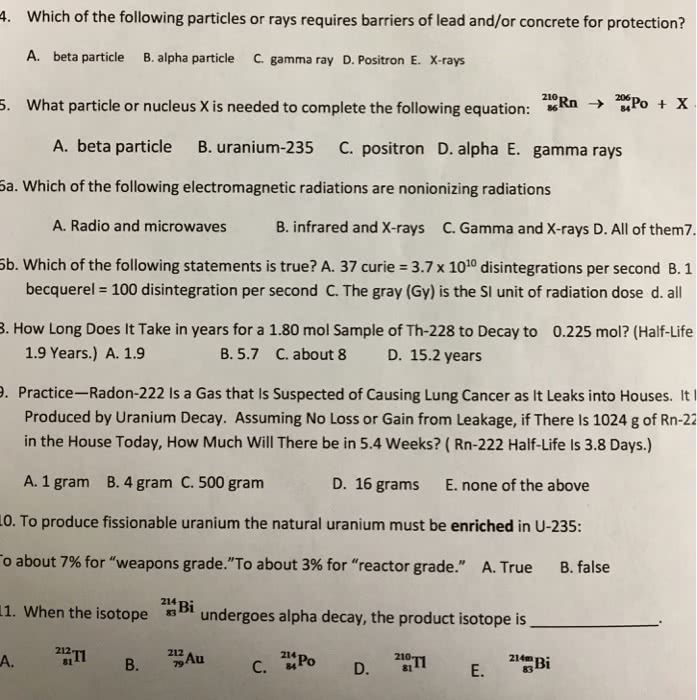CHEM 302 Chapter Notes - Chapter 8: Background Radiation, Sulfate Aerosol, Optical Depth
Document Summary
The radioisotopes 210pb and 7be are often used to determine the atmospheric residence times of aerosols: lead-210 is produced by radioactive decay of 222rn emitted from soils, and condenses immediately on preexisting aerosol particles. The 222rn emission flux is 1. 0 atoms cm-2 s-1 from land (30% of earth"s surface) and zero from the oceans. The only sink of 222rn is radioactive decay (half-life 3. 8 days), producing 210pb. Removal of 210pb is by radioactive decay (half-life 23 years) and by aerosol deposition. The total mass of 210pb in the troposphere is estimated from observations to be 380 g. You should find a value of 8 days: beryllium-7 is produced by cosmic rays in the stratosphere and upper troposphere. Similarly to 210pb, it condenses immediately on preexisting aerosol particles. The global source of 7be is 150 g yr-1; 70% of that source is in the stratosphere and 30% is in the troposphere.


